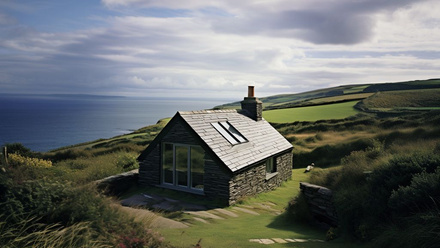Scottish government refuses to rescue Grade A-listed Cardross seminary
The government has accepted Historic Environment Scotland's (HES) recommendation and declined a request from the Catholic Church to take St Peter's Seminary in Cardross, near Dumbarton, into state care.
A report by HES, commissioned by ministers, estimated the cost of maintaining the 'one-off' Category A-listed Modernist building, and making it safe for public access, could be more than £13 million over 20 years. The building, a target for vandals, has not been used since the early 1980s.
The HES report stated that the Archdiocese of Glasgow was likely to seek permission to demolish the building and that, without a developer interested in the 'challenging and unique' site, its retention will likely require government intervention. In that case, the report recommended 'curated decay' – manging detoriation of the seminary while providing a degree of public access.
According to the report, this option would require initial investment of £3.5 million. Beyond this, recurring costs of care over five years would be around £2.5 million, while a major intervention to the building costing a further £500,000 would be needed every five years over a 20-year period.
The report concluded: "We are particularly concerned by the considerable practical issues of access, safety and cost. Having considered all of the issues our advice is that we could not recommend that ministers intervene by bringing St Peter'sinto care."
A spokesman for the Archdiocese of Glasgow said it was 'deeply disappointed' by the Scottish Government's decision and that the request to take the building into state control was 'a last option' for the structure.
"For 40 years the archdiocese has been proactive in trying to find a new use for the building, co-operating with developers and planners to find a way forward," he said. "Every project has failed, due to costs or planning restrictions.
"The archdiocese has even offered to give the building away without charge to any agency able to take it on."
The Archbishop of Glasgow commissioned St Peter's Seminary in 1958. Influenced by the architecture of Le Corbusier, the building, designed by Isi Metzstein and Andy Macmillan, won the RIBA Architecture award in 1967 and was lsited in 1992. It fell into disrepair following its closure in 1980.
Since then, none of the suggestions for the future of the site have progressed. In 2011, developer Urban Splash walked away from a Gareth Hoskins-designed proposal.

St Peter’s Seminary in 1966
In late 2017, the Glasgow-based arts charity NVA decided not to proceed with a project, overseen by Avanti Architects and McGinlay Bell, to stabilise parts of the structure and restore some of the interior for arts and educational use.
In January this year, the archdiocese's director of communications Ronnie Convery described the estate as a 'huge albatross around our neck'.
However designers remained optimistic that the building could be saved.
Fion Hyslop, the cabinet secretary for culture, has written to the archdiocese to offer to facilitate discussion with interested parties on the seminary's future. She said: "The Scottish Government has no choice but to accept the recommendations from Historic Environment Scotland not to take St Peter's Seminary into state care, due to the risk and cost to the public purse it would entail to the detriment of other properties in care.
"We accept the report's analysis that the only reasonable way forward for this site would be 'curated decay' and I plan to convene a meeting with all key partners to see if there is a way forward collectively to deliver what looks like to be the only viable option for St Peter's."
The spokesman for the Archdiocese of Glasgow said it noted the government's recognition that 'curated decay' is perhaps the only remaining option. "We are disappointed that the opportunity to save one of Scotland's great post-war buildings has been missed by the government," he said.





